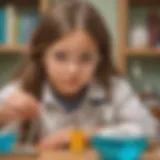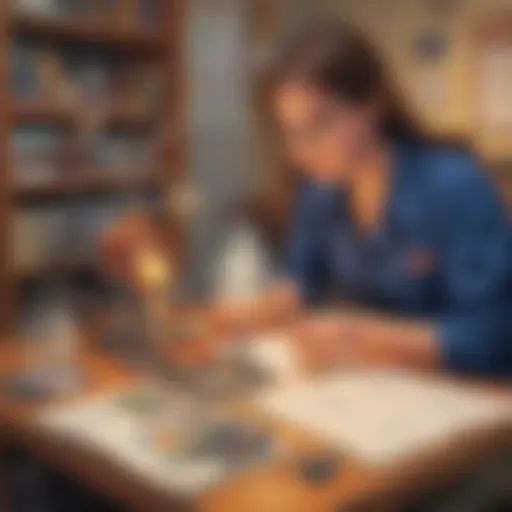Unlocking the Secrets: Exciting Forensic Science Activities for Young Science Enthusiasts
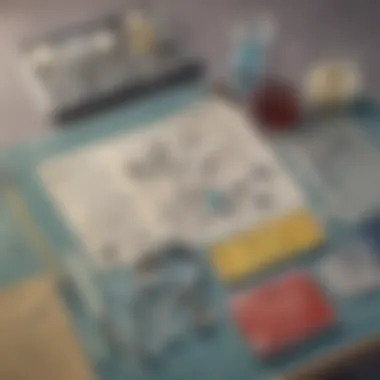

Science Fun Facts
Forensic science, a captivating field that delves into solving mysteries through scientific investigation, offers a plethora of enthralling facts and trivia. Did you know that fingerprints are unique to each individual, making them a reliable form of identification? This uniqueness is due to the pattern of ridges and whorls on the skin. Moreover, forensic scientists can determine a person's approximate age by examining the growth of their teeth, providing valuable insights during investigations. These quirky science facts not only ignite curiosity but also showcase the real-world applications of scientific knowledge.
Discover the Wonders of Science
Immerse yourself in the wonders of forensic science by exploring various scientific concepts such as DNA analysis, footprint comparisons, and blood spatter interpretation. Educational videos and animations can vividly illustrate the intricate processes involved in crime scene investigations, making learning engaging and informative. Interactive learning tools allow young science enthusiasts to uncover the relevance of forensic science in solving real-life mysteries. By delving into the practical applications of scientific principles, children can develop a deeper appreciation for the role of forensic science in unraveling complex puzzles.
Science Quiz Time
Engage young minds with interactive quizzes that test their knowledge of forensic science. From multiple-choice questions about fingerprints to brain teasers on analyzing crime scenes, these quizzes challenge children to think critically and apply their understanding of scientific concepts. By incorporating gamification elements, learning becomes both fun and educational, encouraging active participation and knowledge retention. Explore the fascinating world of forensic science through thought-provoking questions that inspire curiosity and exploration.
Science Experiment Showcase
Unleash your inner scientist with fun and engaging experiments that shed light on the principles of forensic science. Follow step-by-step instructions to conduct experiments on fingerprint detection, chromatography analysis, and hair fiber comparisons. Each experiment includes a detailed materials list to ensure easy preparation, along with safety tips and precautions to promote a safe learning environment. By conducting these hands-on experiments, children can experience the thrill of forensic investigation firsthand, fostering a passion for scientific inquiry and discovery.
Introduction to Forensic Science
Forensic science is a captivating field that plays a pivotal role in solving crimes and mysteries. In this article, we will delve deep into the world of forensic science and its importance in unraveling the truth behind intriguing cases. Understanding the basics of forensic science is crucial for young science enthusiasts as it not only develops critical thinking skills but also nurtures their curiosity towards the scientific method. Through engaging activities and experiments, children aged 6-12 can explore the fundamental principles of forensic science in a hands-on and interactive manner.
Understanding the Basics of Forensic Science
Overview of forensic science principles
Forensic science principles form the foundation of investigative techniques used to analyze evidence and provide insights into criminal investigations. By understanding these principles, young minds can grasp the significance of meticulous observation, documentation, and analysis in solving mysteries. The overview of forensic science principles in this article aims to shed light on the scientific processes involved in forensic investigations, introducing children to the systematic approach employed by forensic scientists.
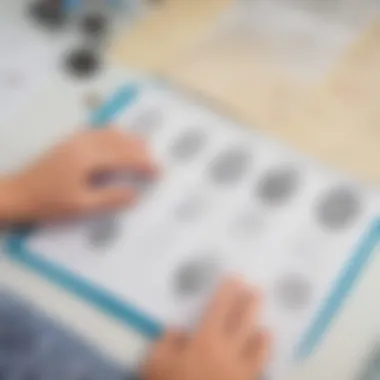

Importance of evidence in investigations
The importance of evidence in investigations cannot be overstated, as it serves as the key to unlocking the truth behind crimes. In this section, young science enthusiasts will learn the critical role that evidence plays in establishing facts, connecting dots, and drawing conclusions. Emphasizing the value of preserving and interpreting evidence accurately, this section aims to instill in children the essence of objectivity and attention to detail when investigating a case.
Role of Forensic Scientists
Analyzing evidence to solve crimes
Analyzing evidence is a core duty of forensic scientists, enabling them to reconstruct events and provide expert opinions in legal settings. By engaging in activities related to analyzing evidence, children can develop a keen eye for detail, logical reasoning, and problem-solving skills. This section will delve into the methodologies used by forensic scientists to examine clues, interpret data, and draw conclusions, offering young learners a glimpse into the fascinating world of forensic analysis.
Types of forensic science areas
Forensic science encompasses various specialized areas, including but not limited to DNA analysis, toxicology, and ballistics. Each area offers unique insights and techniques for unraveling different aspects of a case, providing a holistic approach to investigations. By exploring the diverse types of forensic science areas, children can broaden their understanding of the multidisciplinary nature of forensic work and the wide range of career opportunities available in the field.
Hands-On Forensic Science Activities
In this article, the section on Hands-On Forensic Science Activities serves as a vital component in engaging young science enthusiasts aged 6-12 with the captivating realm of forensic science. By introducing practical activities, children can delve into the application of scientific principles in solving real-world mysteries. These hands-on activities not only spark curiosity but also encourage critical thinking, observation skills, and attention to detail, essential traits for budding forensic scientists.
Fingerprint Analysis
Learning about Fingerprint Patterns
Learning about fingerprint patterns is a fundamental aspect of forensic science activities for young enthusiasts. Understanding the unique ridge patterns on fingertips helps children grasp the concept of individuality and identification through fingerprints. By exploring these patterns, kids can appreciate the science behind how each fingerprint is distinct, leading to a deeper understanding of forensic investigations and evidence analysis. This activity fosters attention to detail and meticulous observation skills crucial in forensic science.
DIY Fingerprinting Techniques
DIY fingerprinting techniques offer young learners a hands-on experience in collecting and analyzing fingerprints. By engaging in DIY fingerprinting, children can learn about the methods used by forensic scientists to gather evidence from crime scenes. This activity allows kids to practice careful handling of materials, attention to detail, and precision in recording and interpreting fingerprint impressions. While DIY fingerprinting techniques provide an interactive and engaging learning experience, they also emphasize the importance of accuracy and thoroughness in forensic investigations.


Blood Spatter Analysis
Understanding Blood Spatter Patterns
Exploring blood spatter patterns in forensic science activities helps children comprehend the physics and biology behind bloodstains at crime scenes. By studying blood spatter patterns, young enthusiasts can learn how the shape, size, and distribution of bloodstains provide valuable clues about a crime. Understanding blood spatter patterns enhances children's analytical skills, attention to detail, and the ability to draw conclusions from empirical evidence.
Simulation of Blood Spatter Analysis
Simulating blood spatter analysis enables children to reconstruct crime scenes and analyze bloodstains in a controlled setting. By engaging in this activity, young learners can apply scientific principles to interpret patterns of blood spatter and simulate investigative processes. This hands-on experience immerses kids in the practical aspects of forensic science, emphasizing the importance of meticulous observation, logical reasoning, and attention to detail in analyzing evidence.
Forensic Chemistry Experiments
Identifying Unknown Substances
The identification of unknown substances through forensic chemistry experiments introduces children to the concept of analytical chemistry in forensic investigations. By conducting tests to identify substances, young enthusiasts can explore the scientific methods used to analyze and categorize evidence. This activity enhances children's knowledge of chemical reactions, observation skills, and the interpretation of experimental results, fostering a deeper understanding of forensic science principles.
Chemical Reaction Investigations
Engaging in chemical reaction investigations allows children to explore the role of chemistry in forensic analysis. By conducting experiments to understand chemical reactions, young learners can uncover how substances interact and transform, leading to the development of investigative skills. This activity encourages children to hypothesize, experiment, and draw conclusions based on their observations, promoting logical thinking and critical analysis in forensic science.
Crime Scene Investigation Simulation
Setting up a Mock Crime Scene
Setting up a mock crime scene provides children with a hands-on opportunity to experience the process of securing and examining a crime scene. By creating a simulated investigative environment, young enthusiasts can practice systematic evidence collection, documentation, and analysis. This simulation activity reinforces the importance of methodical approaches, attention to detail, and collaboration in solving mysteries, nurturing essential skills in forensic science.
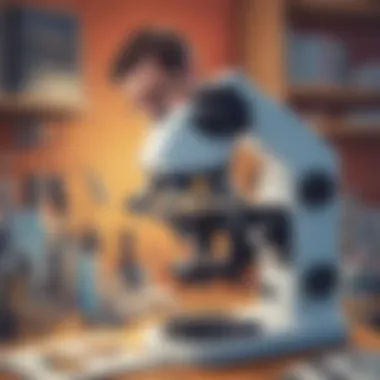

Collecting and Analyzing Evidence
The collection and analysis of evidence in crime scene investigation simulations allow children to apply scientific methods to solve puzzles and unravel mysteries. By collecting and analyzing various types of evidence, young learners can piece together information, make inferences, and draw conclusions based on empirical data. This activity immerses children in the role of forensic scientists, emphasizing the significance of precision, objectivity, and critical thinking in forensic investigations.
Interactive Learning Resources
In the realm of forensic science exploration for young science enthusiasts, Interactive Learning Resources play a pivotal role in cultivating a deep understanding and interest in the subject matter. These resources serve as valuable tools that engage children in a hands-on and immersive learning experience. By leveraging Interactive Learning Resources, children can grasp complex scientific concepts in a fun and interactive way, making learning both educational and enjoyable. Parents and educators can utilize these resources to foster a love for science in children from a young age, paving the way for future scientific exploration.
Online Forensic Science Games
- Engaging and Educational Game Options: Online Forensic Science Games are designed to be both engaging and educational, offering children a platform to learn key forensic science principles while having fun. These games enhance critical thinking skills, problem-solving abilities, and scientific knowledge in an interactive environment. By providing a blend of entertainment and education, Engaging and Educational Game Options create an immersive learning experience that keeps children captivated and eager to delve deeper into the world of forensic science.
- Virtual Crime Scene Challenges: Virtual Crime Scene Challenges give children a unique opportunity to apply forensic science concepts in solving simulated crimes. These challenges replicate real-life scenarios, allowing children to analyze evidence, draw conclusions, and develop essential investigative skills. By immersing children in virtual crime scenes, these challenges offer a hands-on experience that strengthens problem-solving capabilities and encourages logical reasoning. Virtual Crime Scene Challenges provide a safe and engaging way for young learners to explore the intricacies of forensic science.
Forensic Science Kits
- DIY Kits for Young Investigators: DIY Forensic Science Kits provide children with the tools and materials needed to conduct their investigations, fostering independence and curiosity. These kits offer a hands-on approach to learning, allowing children to explore scientific concepts through experimentation and observation. DIY Kits for Young Investigators empower children to take charge of their learning journey and develop essential scientific skills in a controlled and engaging setting.
- Tools and Instructions Included: Forensic Science Kits come complete with tools and instructions that guide children through various experiments and activities. The inclusion of detailed instructions ensures that children can conduct experiments safely and effectively, promoting a structured learning experience. The tools provided in these kits enable children to explore different aspects of forensic science, from fingerprint analysis to chemical reactions, enhancing their understanding of scientific principles in a practical and engaging manner.
Forensic Science Worksheets
- Printable Activities for Hands-On Learning: Forensic Science Worksheets offer printable activities that engage children in hands-on learning experiences. These activities cover a range of forensic science topics, allowing children to apply theoretical knowledge in practical situations. Printable Activities for Hands-On Learning promote critical thinking, observation skills, and attention to detail, providing children with a comprehensive understanding of forensic science concepts.
- Answer Keys for Guidance: In addition to printable activities, Forensic Science Worksheets include answer keys that serve as a valuable resource for children, parents, and educators. These answer keys offer guidance and explanations, helping children verify their answers and understand the rationale behind each solution. By providing answer keys, these worksheets promote independent learning and encourage children to approach problem-solving in a structured and systematic manner.
Safety Tips and Guidelines
In the realm of forensic science activities for young science enthusiasts, the section of safety tips and guidelines holds paramount importance. Safety should always be at the forefront of any scientific exploration, especially when engaging young minds in hands-on experiments. By instilling a culture of safety from the outset, children not only learn to respect the materials and methodologies involved in forensic science but also develop vital skills for a lifetime of scientific inquiry. Safety considerations encompass a wide array of factors, from proper handling of chemicals to equipment usage and environmental precautions. Ensuring a safe learning environment is not just a matter of following rules but understanding the importance of protection and well-being in every scientific pursuit.
Ensuring Safe Experimentation
Supervised activities for young learners
Supervised activities form the cornerstone of safe experimentation for young learners delving into forensic science. The presence of adult supervision not only guarantees the physical safety of children but also provides them with guidance and support throughout their scientific journey. Supervised activities allow youngsters to explore challenging concepts with the assurance that knowledgeable adults are on hand to intervene in case of emergencies or confusion. This hands-on approach under careful supervision enhances the learning experience by enabling children to push their boundaries in a secure environment.
Proper handling of materials
Proper handling of materials is another crucial aspect of maintaining safety standards in forensic science activities. Teaching children the correct procedures for handling equipment and substances not only minimizes the risk of accidents but also instills good laboratory practices early on. Emphasizing the importance of following instructions precisely and respecting safety protocols sets a strong foundation for responsible scientific exploration. By integrating proper handling techniques into every activity, young science enthusiasts develop a keen awareness of the risks involved in experimentation and the necessity of cautious, methodical conduct.
